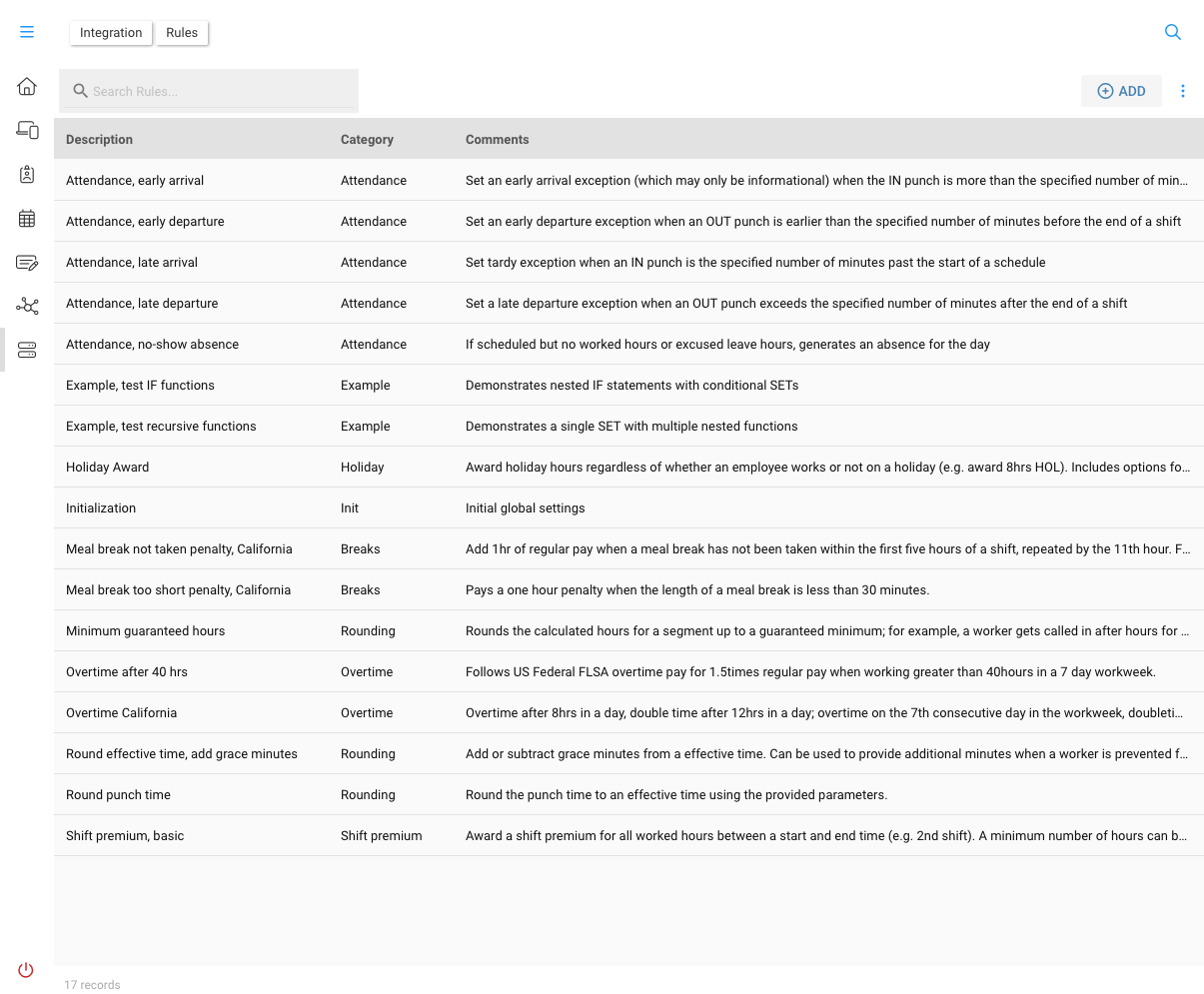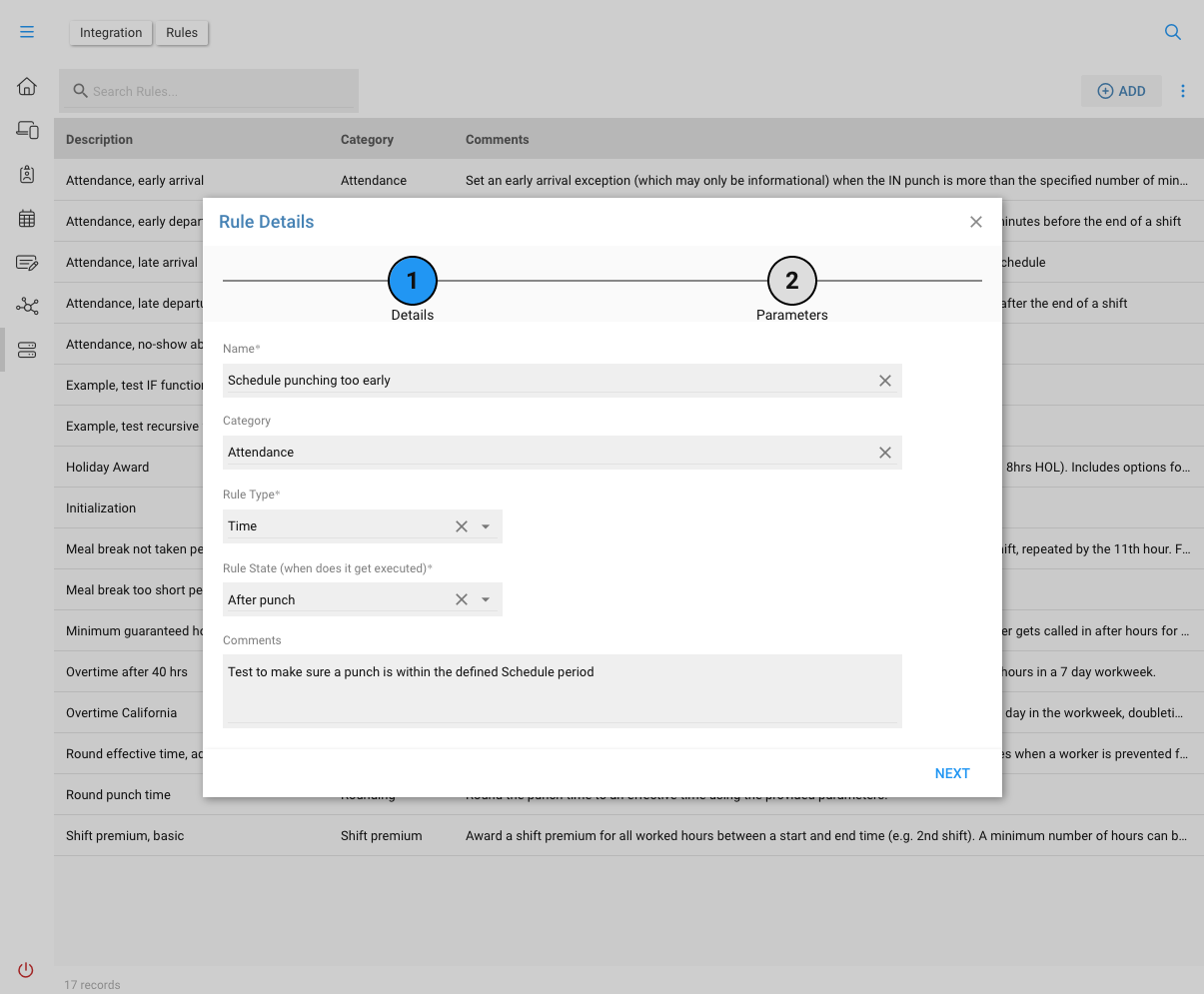Creating Rules
Lets start by jumping into the Rules app and looking at the process of creating a new rule.
Open the Rules app under Tools, or use the application search to find Rules.

The Rules app lists all existing rules in your SimplyWork instance. Each rule includes a Category used to help group similar rules. You can create new categories as needed as they are only for organization.
Use the Add button to create a new rule, or simply tap on any existing rule to open. The following New Rule Wizard only appears when creating a rule

The New Rule Wizard will guide you through the first few steps of creating a rule. The first wizard page contains the following form items:
| Item | Description |
|---|---|
| Name | Enter a name for the rule. Rules are listed alphabetically, and are searchable by both Name and Category, but its generally helpful if the name follows some convention (e.g. all Attendance rules start with "Attendance, ...") so-as to be listed near each other. |
| Category | The general category for the rule. These are not predefined, so can be anything; existing categories include Attendance, Overtime, Rounding, Holiday and so on. |
| Rule Type | The primary use-case here is Time which will be applied to Pay Groups |
| Rule State | This is a critical component as it determines when or where in the process the rule will be executed (see discussion in prior section) |
| Comments | A general summary of the rule |
The Rule State determines where the rule is processed in the timeline, essentially the order but also what data is available at the time of rule execution.
The next step in the New Rule Wizard is Parameters. Parameters are the variables which are part of the rule execution, but who's value will be provided when the rule is attached to a Pay Group. Parameters could also be hard-coded into a rule, and there are times when that will make sense, but generally parameters provide for better re-use of a rule.
We'll go into parameters a bit more in the next section
You can create parameters now during the wizard or later, but it is a good idea to have a plan of all the parameters you want to expose to users prior to writing the workflow of the rule.

Press Done to complete the wizard. In the next section we'll talk about parameters in more detail.